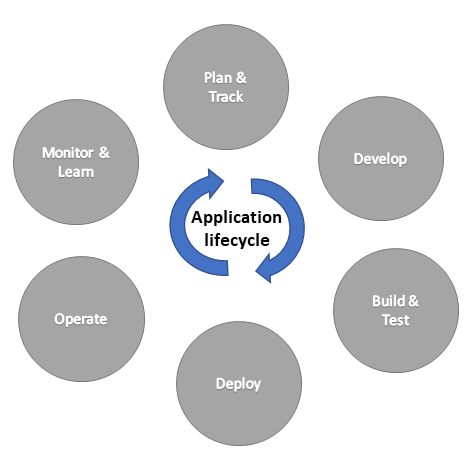
Introduction to Application Lifecycle Management
Application Lifecycle Management (ALM) for the Power Platform and similar platforms is the integrated and collaborative approach to the entire lifecycle of your apps and projects. This means that instead of taking an iterative, or step-by-step approach to software creation, you look at the entire process from beginning to end. From its initial planning and development, through testing and maintenance, and into decommissioning and retirement.
Therefore, ALM is known as the combination of many disciplines. These include: requirements management, software architecture, development, testing, maintenance, change management, continuous integration, project management, deployment, and release management. As you can see, Application Lifecycle Management is comprehensive. But that is also why it is the most flexible and efficient approach. By combining and organizing the different parts of an application’s lifecycle, ALM improves product quality, optimizes productivity, and reduces management and maintenance stress for related products and services.

The Importance of ALM
By being so comprehensive, ALM helps companies set and meet requirements for projects. It also improves the development process by requiring frequent, thorough testing. In addition, it helps developers adjust development processes and goals during the software lifecycle, rather than afterward. Finally, ALM helps ensure that all teams (development, operations, and security) can collaborate effectively to produce the best possible software.
Application Lifecycle Management and Power Platform
In Microsoft’s Power Platform, Application Lifecycle Management means using environments to have eyes on all elements of your app’s lifecycle. This is known as an environment strategy.
It is recommended to use three environments: development, production, and a test environment. While these three are the recommended minimum, you should take your organization’s own needs into account. Consider these articles from Microsoft for more in-depth information:
https://docs.microsoft.com/en-us/power-platform/alm/basics-alm
https://docs.microsoft.com/en-us/power-platform/alm/environment-strategy-alm
When ALM is the chosen approach to building apps on Power Platform, it can improve speed, reliability, and user experience. It also ensures that both traditional developers writing code, as well as citizen developers, can jointly contribute to the application being built.
Other ALM Tools
In addition to the environments in Microsoft’s Power Platform there is an abundance of ALM tools available to give you stable collaborative environments where all aspects of the app’s lifecycle can be considered. These tools can range from specialized, purchasable products, to simple wikis that must be updated manually. It is important to remember that ALM is an approach, not a rigid system. Your organization’s specific needs must be taken into account to give you the most efficiency and productivity.
For example, if you work with projects that use many low-code apps, flows and dashboards, and are looking for a way to ensure governance and compliance across them, then Runpipe would be a great fit for you!
The Bottom Line
With Application Lifecycle Management, you get a bird’s eye view of your projects in a way that other approaches fail to deliver. Through this comprehensive approach, you get increased visibility into workflow, enhanced compliance, faster deployments, and higher quality products. On the Power Platform especially, where environments and Runpipe can help you, ALM is an approach worth embracing.

